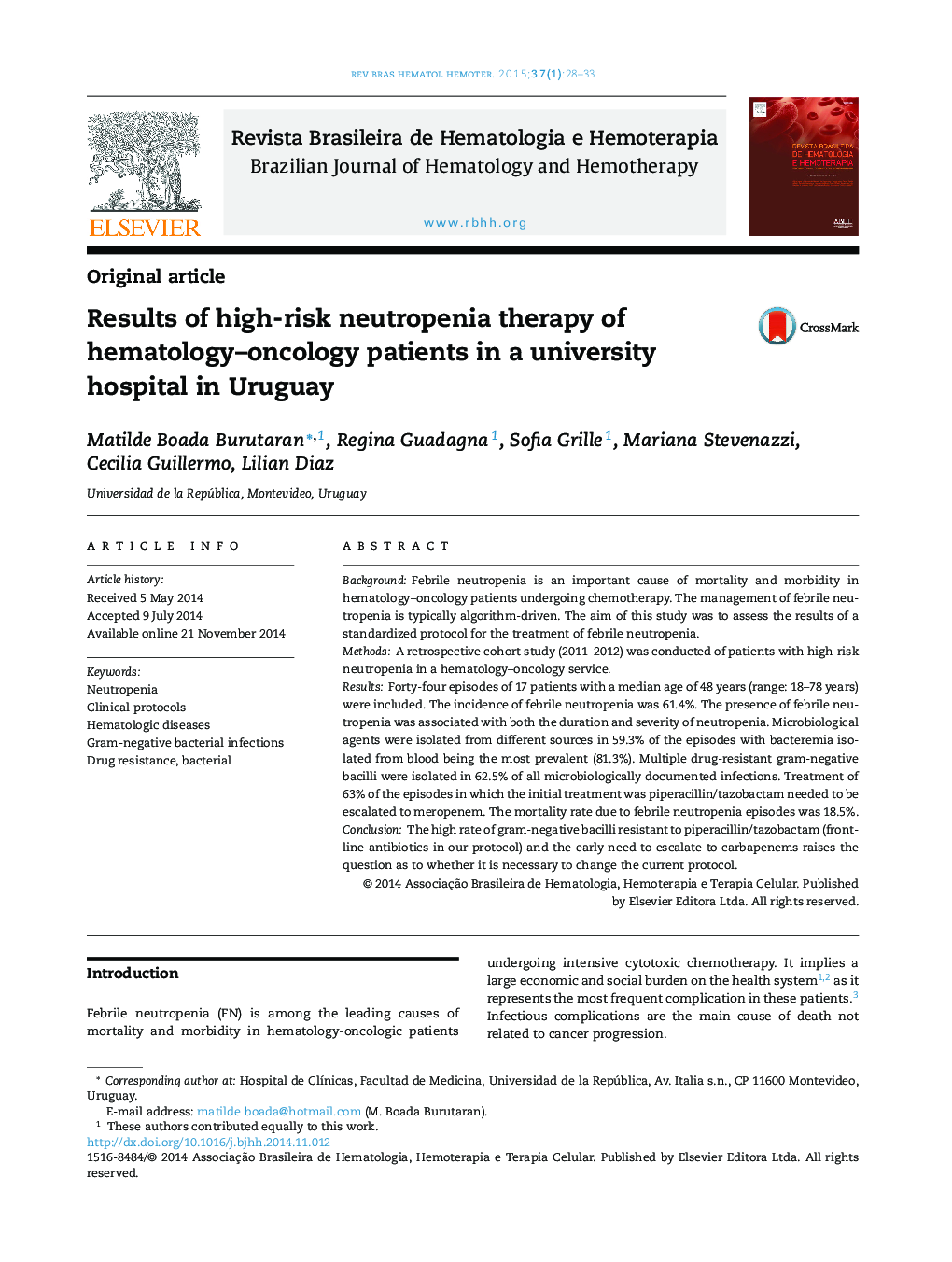| Article ID | Journal | Published Year | Pages | File Type |
|---|---|---|---|---|
| 3333047 | Revista Brasileira de Hematologia e Hemoterapia | 2015 | 6 Pages |
BackgroundFebrile neutropenia is an important cause of mortality and morbidity in hematology–oncology patients undergoing chemotherapy. The management of febrile neutropenia is typically algorithm-driven. The aim of this study was to assess the results of a standardized protocol for the treatment of febrile neutropenia.MethodsA retrospective cohort study (2011–2012) was conducted of patients with high-risk neutropenia in a hematology–oncology service.ResultsForty-four episodes of 17 patients with a median age of 48 years (range: 18–78 years) were included. The incidence of febrile neutropenia was 61.4%. The presence of febrile neutropenia was associated with both the duration and severity of neutropenia. Microbiological agents were isolated from different sources in 59.3% of the episodes with bacteremia isolated from blood being the most prevalent (81.3%). Multiple drug-resistant gram-negative bacilli were isolated in 62.5% of all microbiologically documented infections. Treatment of 63% of the episodes in which the initial treatment was piperacillin/tazobactam needed to be escalated to meropenem. The mortality rate due to febrile neutropenia episodes was 18.5%.ConclusionThe high rate of gram-negative bacilli resistant to piperacillin/tazobactam (front-line antibiotics in our protocol) and the early need to escalate to carbapenems raises the question as to whether it is necessary to change the current protocol.
